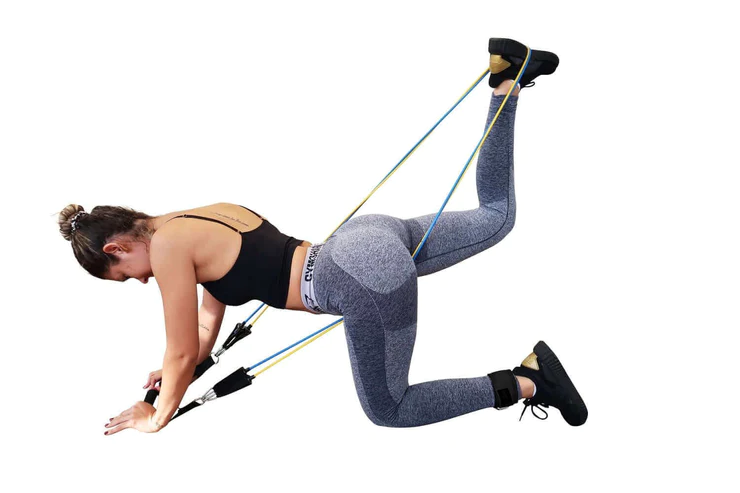Chronic lower back pain can be debilitating, often stemming from weakened core muscles and poor lumbar stability. The Theraband Lumbar Stabilization Routine is designed to target and strengthen the muscles supporting the lower back, providing relief and promoting overall spinal health. Incorporating Theraband resistance adds an element of controlled tension, making these exercises particularly effective in addressing lower back pain.
Theraband lower back exercises pdf

1. Pelvic Tilts with Theraband:
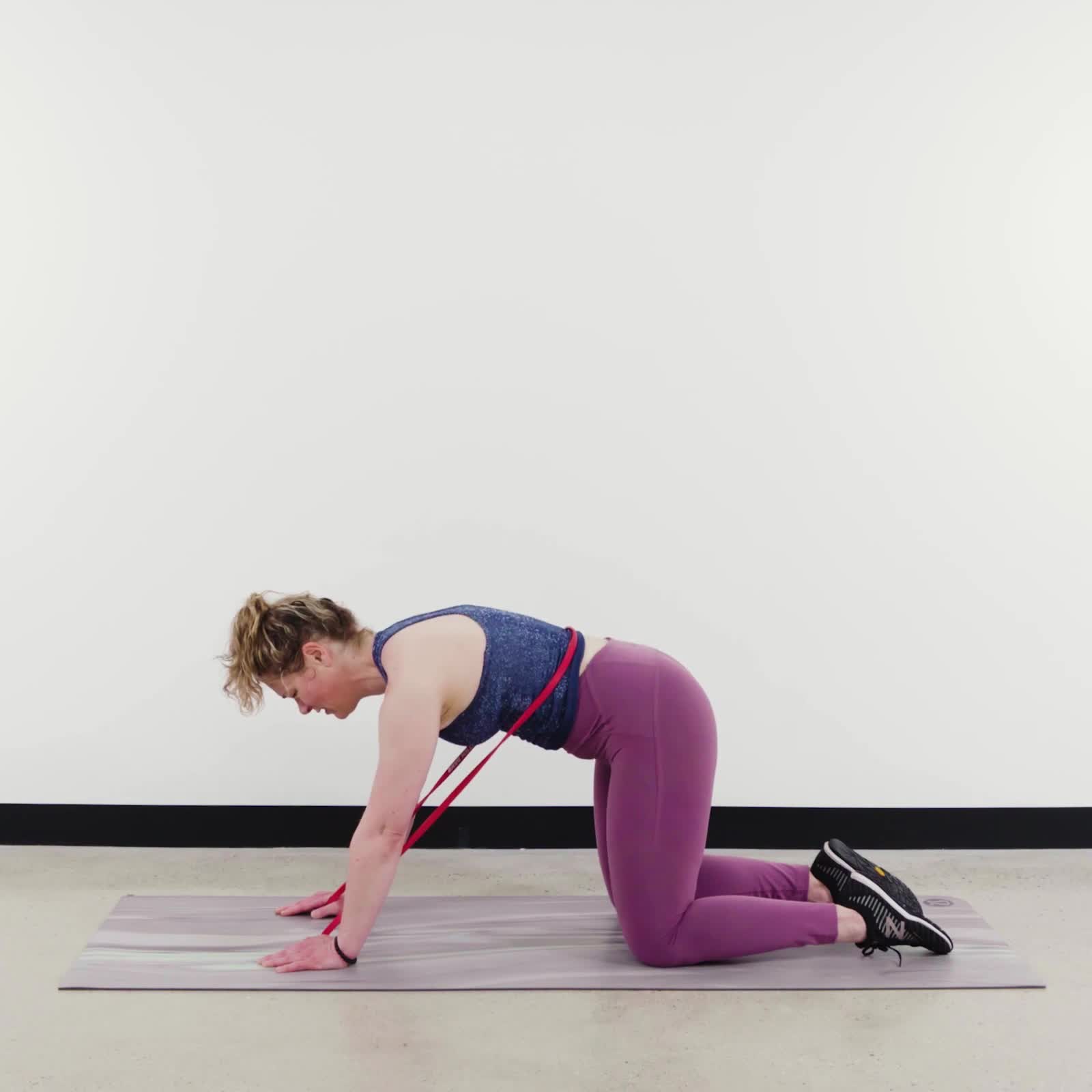
Pelvic tilts with Theraband offer a gentle yet effective way to activate and strengthen the core muscles surrounding the lower back. The Theraband, positioned strategically, adds resistance to pelvic movements, aiding in improving flexibility, stabilizing the lower back, and alleviating discomfort associated with lumbar issues.
How to do:
- Lie on your back with knees bent and Theraband looped around your thighs.
- Inhale and tilt your pelvis upward, pressing your lower back into the floor.
- Engage your core muscles, hold for a moment, and then exhale as you release the tilt.
- Repeat for 15-20 repetitions to enhance pelvic mobility and strengthen the lower back.
2. Theraband Bridge Exercise:
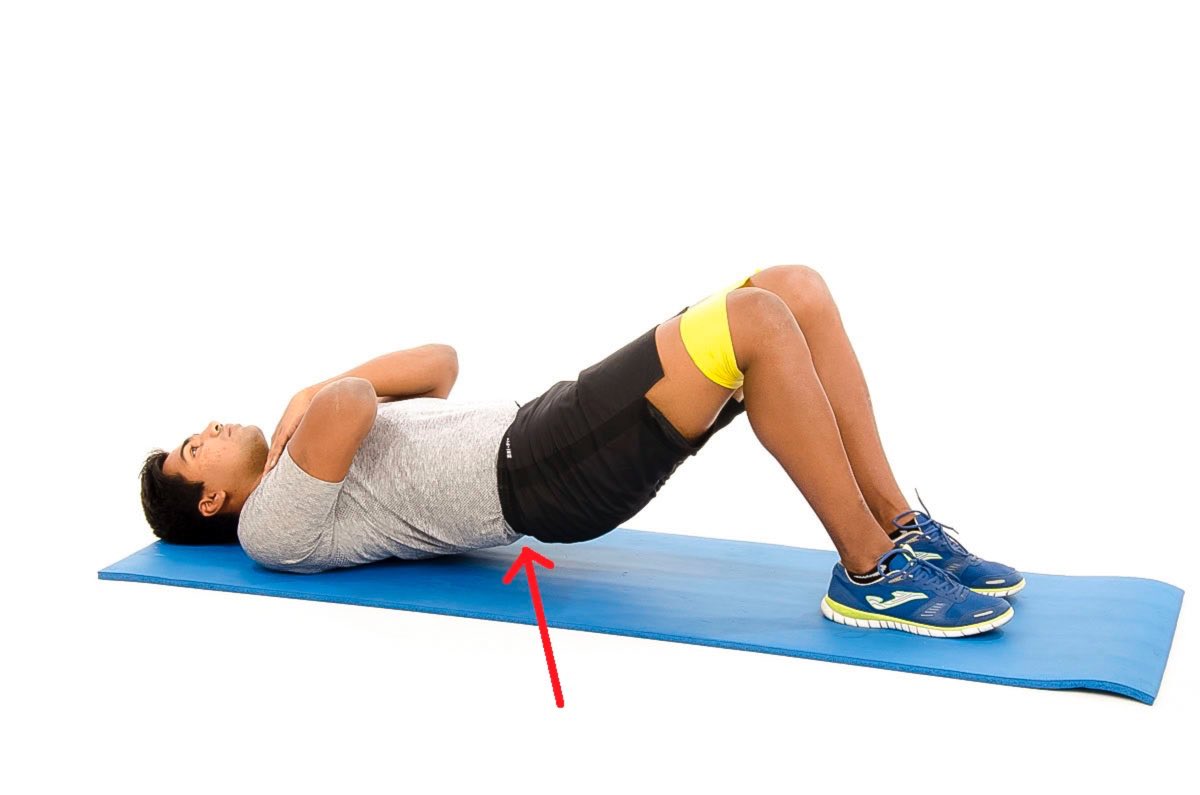
The Theraband Bridge Exercise is designed to target the posterior chain, including the glutes and lower back muscles. By incorporating the Theraband just above the knees, this exercise not only enhances the engagement of the glutes but also promotes controlled movement, contributing to improved lower back stability and reduced pain.
How to do:
- Lie on your back with knees bent and Theraband placed just above your knees.
- Lift your hips towards the ceiling, squeezing your glutes, and maintaining resistance on the Theraband.
- Hold for a few seconds at the top, then lower your hips back down.
- Perform 12-15 repetitions to activate the posterior chain and improve lower back stability.
3. Standing Lumbar Rotation with Theraband:
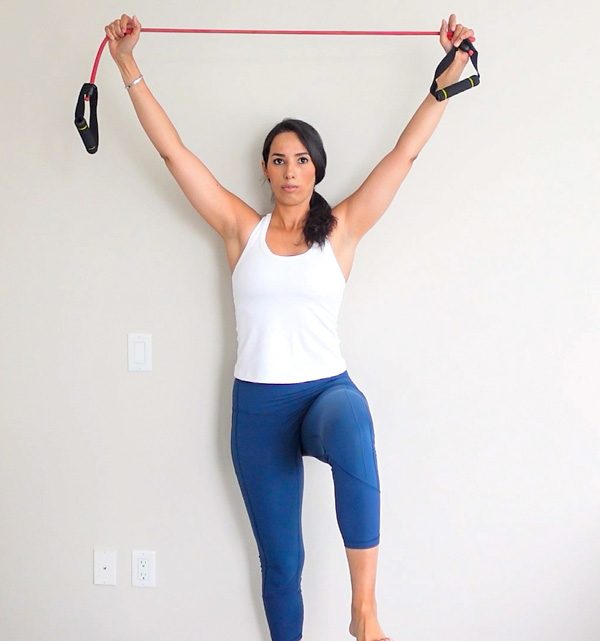
This standing exercise focuses on enhancing lumbar mobility and strength through controlled rotations. By utilizing the Theraband as a resistance tool, the Standing Lumbar Rotation exercise engages the muscles responsible for twisting movements in the lower back, promoting increased flexibility and mitigating discomfort associated with stiffness.
How to do:
- Stand with feet shoulder-width apart, Theraband anchored at waist height.
- Hold the Theraband with both hands and rotate your torso to one side, keeping your hips stable.
- Return to the center and repeat on the other side.
- Perform 10-12 rotations on each side to enhance lumbar flexibility and strength.
4. Theraband Dead Bug Exercise:
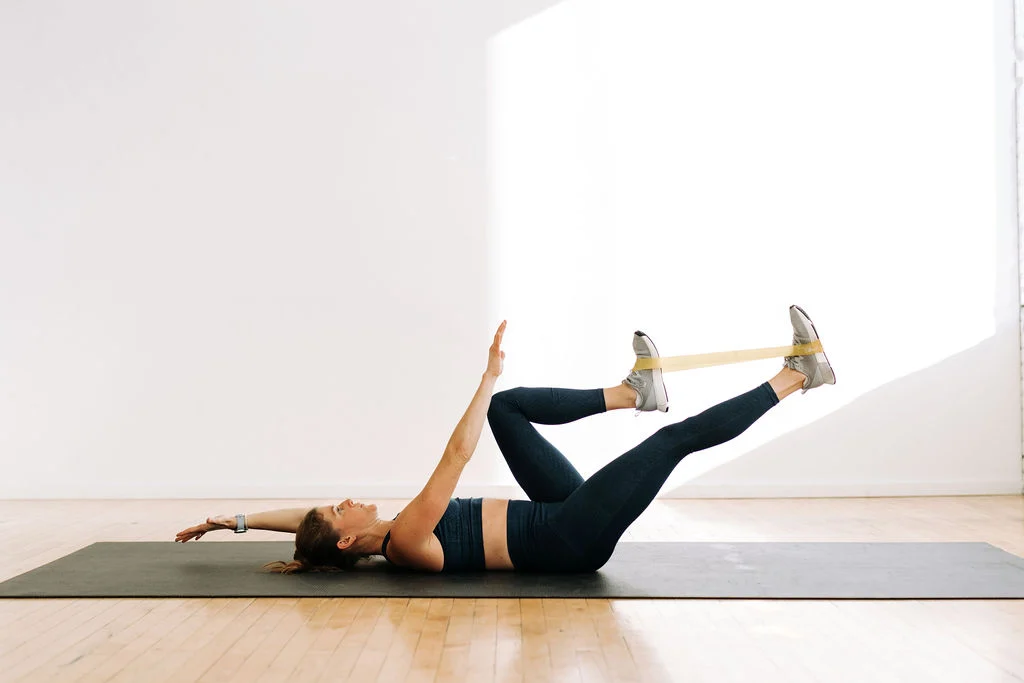
The Theraband Dead Bug Exercise is a dynamic core workout that targets the rectus abdominis and lower back muscles. By incorporating the Theraband around the wrists, this exercise challenges coordination and stability while promoting controlled movements, contributing to improved lumbar strength and a reduction in lower back pain.
How to do:
- Lie on your back with Theraband looped around your wrists and knees lifted to a tabletop position.
- Extend one leg while simultaneously reaching the opposite arm backward, keeping tension on the Theraband.
- Return to the starting position and alternate sides.
- Complete 12-15 repetitions on each side to engage the core and improve lumbar stability.
5. Seated Row with Theraband:
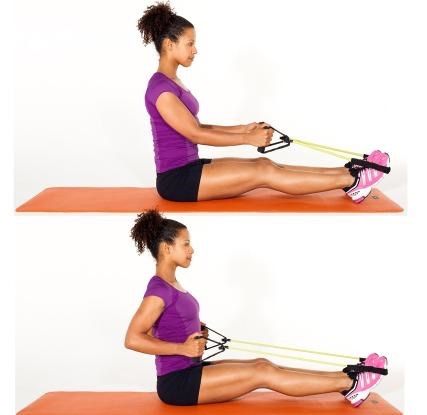
Seated Row with Theraband is a seated, resistance-based exercise that specifically targets the muscles of the upper back. By incorporating the Theraband looped around the feet, this exercise engages the muscles responsible for shoulder blade retraction, promoting better posture and providing support to the lower back, ultimately contributing to pain relief.
How to do:
- Sit on the floor with your legs extended and Theraband secured around your feet.
- Hold one end of the Theraband in each hand, arms extended.
- Pull the Theraband towards your chest, squeezing your shoulder blades.
- Perform 15-20 repetitions to strengthen the upper back and improve overall spinal support.
Consistency is key to gaining the maximum benefit from these Theraband exercises. If you experience persistent or worsening pain, it’s crucial to consult with a healthcare professional before continuing the routine. Adjust the Theraband resistance as needed and focus on controlled, deliberate movements to ensure proper form and effectiveness.
